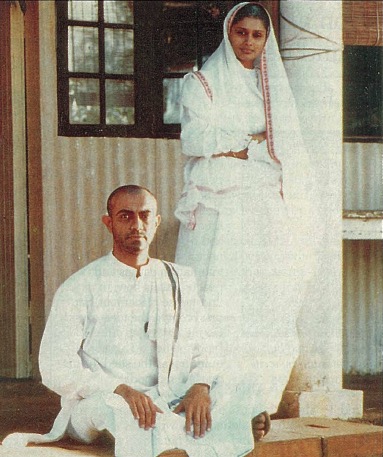By Lavina Melwani
While the world thinks of Gandhi as the sainted man in khadi loincloth leaning on a cane, there is another Gandhi–a painfully shy young man struggling to formulate his ideas, the man before he became the Mahatma. This is the Mohandas K. Gandhi documented in “The Making of the Mahatma,” a collaboration of National Film Development Corporation of India and the SABC of South Africa. This film about Gandhi’s experiments with truth and nonviolence in colonial South Africa was produced in India and South Africa. It is based on the book Apprenticeship of a Mahatma by Fatima Meer and directed by one of India’s most respected directors, Shyam Benegal.
“The Making of the Mahatma” premiered in November at New York’s Guild Theater. The film intentionally lacks the panoramic proportions and epic scale of Attenborough’s “Gandhi.” Benegal says, “This is a more intimate story. It is concerned with so much that had to change in Gandhi before he became the Mahatma.” The film documents Gandhi’s 21 years in South Africa, from age 19, and the changes which came over this anglicized, London-trained barrister as he encountered the racial discrimination and bias of the colonials first hand. There are stirring scenes where Gandhi stands up for exploited indentured laborers and builds up their awareness of their rights.
Rajit Kapur, a film and theater actor from Mumbai, gives a strong performance as Gandhi, and Pallavi Joshi, who has 42 teleserials to her credit, wonderfully portrays his wife Kastura. Viewers may be surprised to see Gandhi’s quiet, subdued spouse played as a strong and vocal woman. Benegal explains, “People get the impression that she was a doormat, but she was very much her own person, and a strong-willed woman. She got him to change his views, and he became a strong supporter of independent women.” The film is shot in the area where Gandhi actually lived one hundred years ago, including his old house on Loop Street.
South Africa’s president, His Excellency Nelson Mandela, a follower of Gandhian philosophy, was deeply moved by the production: “I am glad that our youth will see this film. It will show them the depth from which our struggle grew and the sacrifices that were made by people protesting against what was done to us in the past.”
Etching Gandhi with all his faults and foibles makes him more accessible as a role model than the haloed, saintly father of the nation who could do no wrong. This young Gandhi, who had failed many, many times before, struggles with his very human temptations and fears. It shows how an ordinary man rose to extraordinary heights, becoming the leader of 100,000 people in a South African satyagraha, a war without violence, the prelude to his emancipation of the subcontinent’s 350 million Indians.
